5 Tips for a Successful Email Marketing Campaign
It’s a common misconception that marketing through email is dead. In all actuality, 90% of adults and 74% of teenagers use emails regularly. Email marketing is still a great tool for building customer relationships and generating leads and sales. Best practices for things like deliverability, subject lines, and layout have evolved over recent years. There are many aspects that go into whether or not the recipient sees or opens your message, meaning there are many aspects to be kept in mind before hitting send.
Here are the top 5 tips for creating a successful email marketing campaign:
1. Build a Strong Subscriber List for Precise Targeting
Every successful email marketing campaign starts with a full list of qualified leads that are already interested in what’s being offered. This list can be built by converting website visitors into subscribers. Even if you feel that you already have an established list, never stop adding to it. Your website should have strong sign up features with forms on the homepage, blog page and anywhere else you can fit it without taking away from more important content.
After you’ve built a targeted email list, gather as much data as possible. From geographic location to customer buying habits, study the data so the list can be divided accordingly. Not every subscriber should be treated the same, which is one of the most common mistakes made in email marketing campaigns. Data can be easily gathered through Google Analytics or Facebook.
2. Create a Compelling Subject Line
A subject line can make or break an email campaign, as it’s what customers base their decision to read or delete the email off of. The subject line should be honest, compelling, and attention grabbing. It’s best to avoid hot-button phrases like “make money” or “earn fast cash.” Phrases like these often make users weary that it’s a spam email, causing them to delete immediately. Go for subject lines that pique the recipient’s curiosity, but tells the truth at the same time. Consider these options when creating your subject line:
- Telling people what they will get out of opening your email.
- Adding personalization, as including people’s name in the subject line can keep them more engaged.
- Borrowing one of these high-converting email subject lines and adapting it for your own use.
3. Personalize When Possible
Try to add personal elements to emails whenever possible. Most email tools allow you to enter shortcodes that will be replaced by the recipient’s name when the email is sent out. If you have a business that works with multiple industries, consider sending out different versions of your email with each one providing information specific to each industry. The more personal you can get, the easier it is to build trust. You’ll also have a better chance of your emails being opened and read.
4. Keep it Clean and Simple
Keep layout crisp and clean by limiting the use of flashy graphics, huge fonts, or any other “in your face” items. The email should look professional and be easy to navigate. Consider:
- Using short paragraphs and ensuring that keywords and phrases relevant to your readers stand out.
- Including bullet points to help people skim the content and take in the vital points.
- Inserting pictures sparingly. Images should illustrate your message rather than replace your content. Some email providers block images or consider them an indicator of spam.
5. Include a Powerful Call to Action
The goal of most email campaigns is to generate traffic back to the site or a specific landing page. Always try to include visually striking buttons with text that give readers more than one opportunity to interact. It should usually appear multiple times within the copy. You don’t want to pitch readers too soon, or anywhere that it seems awkward, but there’s usually a CTA near the start, middle, and end. The best call to actions are short and clear.
More From Onimod Global
To catch up on the latest digital marketing news and trends, click here. To find out more about who we are and what we do, click here!

